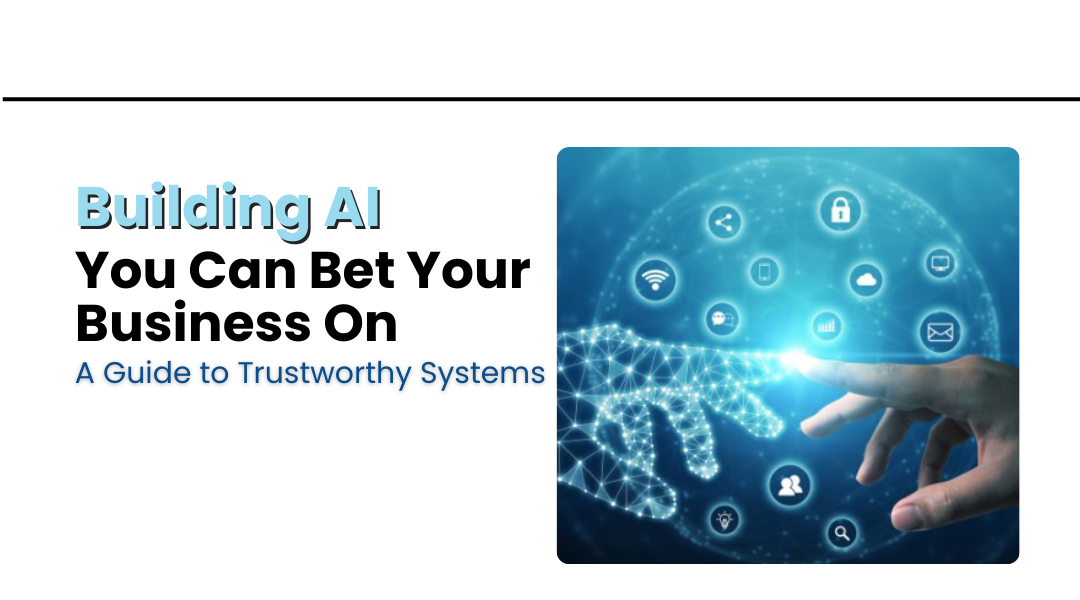Let’s be clear: anyone can train a model that gets good accuracy on a test set. The real challenge—the mark of a mature AI team—is building systems that are secure, understandable, and accountable long after they’ve been deployed into the messy reality of the world. This isn’t about checking boxes for regulations; it’s about engineering resilience and trust into the very DNA of your AI projects.
Here’s how the best teams are moving beyond basic performance to build AI that stands the test of time.
The Pillars of Production-Ready AI
Think of these not as burdensome requirements, but as the non-negotiable pillars that hold up any serious AI initiative.
1. Security: Your Model is a High-Value Target
An AI model is a new and attractive attack surface. Adversaries aren’t just trying to steal data; they want to manipulate the model itself.
- Real-World Threat: Imagine a fraud detection system silently being “poisoned” during training by a malicious actor who injectes subtle patterns that cause it to approve their fraudulent transactions. Or, consider an autonomous vehicle’s vision system being tricked by strategically placed stickers on a stop sign, making it perceive a speed limit sign instead.
- Best Practice in Action: Security means adversarial training—intentionally attacking your own model during development to harden its defenses. It involves rigorous data provenance checks to ensure your training data hasn’t been tampered with. For highly sensitive applications, techniques like homomorphic encryption allow you to run inferences on encrypted data without ever decrypting it, rendering the model itself useless if stolen.
2. Transparency: Demystifying the “Black Box”
The era of “just trust the algorithm” is over. If a model’s decision impacts a person’s life, livelihood, or health, you must be able to explain it. This isn’t just for regulators; it’s for your own engineers to debug and improve the system.
- Real-World Need: A bank using an AI to deny mortgage applications will face immediate lawsuits and regulatory scrutiny if it cannot provide a clear, actionable reason for each denial. “The model said so” is not a valid defense.
- Best Practice in Action: Transparency is achieved through Explainable AI (XAI) techniques. Tools like SHAP or LIME can show which factors (e.g., “credit history length” and “debt-to-income ratio”) most heavily influenced a specific decision. This isn’t about showing the millions of weights in a neural network; it’s about providing a human-readable “reason code” that builds trust and enables oversight.
3. Accountability: Who is Responsible When It Goes Wrong?
A model is not a sentient being you can hold accountable. People are. Clear ownership and governance are what prevent AI failures from becoming catastrophic organizational failures.
- Real-World Scenario: An AI-powered hiring tool is found to systematically downgrade applicants from certain universities. Who is responsible? The data scientist who built it? The HR team that deployed it? The legal team that approved it?
- Best Practice in Action: Establish a clear Model Governance Board with cross-functional representation (Legal, Engineering, Ethics, Business). This board owns the model’s lifecycle—from its initial ethical risk assessment to its approval for deployment and its eventual decommissioning. They maintain an audit trail that logs every change, every performance dip, and every human override, creating a clear chain of responsibility.
Weaving Best Practices Into Your Workflow
This isn’t a phase at the end of a project; it’s a continuous thread woven throughout.
- Bias Detection is a Continuous Process: Don’t just check for bias once. Continuously monitor your model’s predictions in production for disparate impact across different demographic groups. Tools like Amazon SageMaker Clarify or IBM AI Fairness 360 can automate this monitoring and trigger alerts.
- Human-in-the-Loop (HITL) is a Feature, Not a Bug: Design systems that know their limits. For low-stakes decisions like movie recommendations, full automation is fine. For high-stakes decisions like medical triage or parole hearings, the model should act as an expert assistant, flagging cases and providing analysis, but leaving the final call to a trained human. This is the ultimate fail-safe.
- Documentation is Your Shield: Maintain a Model Fact Sheet for every production model. This living document should clearly state the model’s intended use, its limitations, the data it was trained on, its known performance characteristics across different groups, and its results on fairness and explainability tests. This is your single source of truth for auditors, customers, and your own team.
Conclusion: Trust is the Ultimate Feature
In the long run, the most accurate model in the world is worthless if no one trusts it enough to use it. Adhering to these standards isn’t a tax on innovation; it’s an investment in your product’s longevity and your company’s reputation.
By prioritizing security, you protect your assets and your users. By insisting on transparency, you build confidence and facilitate improvement. By enforcing accountability, you create a culture of responsibility that prevents cutting corners.
Ultimately, these practices transform AI from a mysterious, unpredictable force into a reliable, understandable tool—the kind you can truly bet your business on. And that is the highest standard of all.
